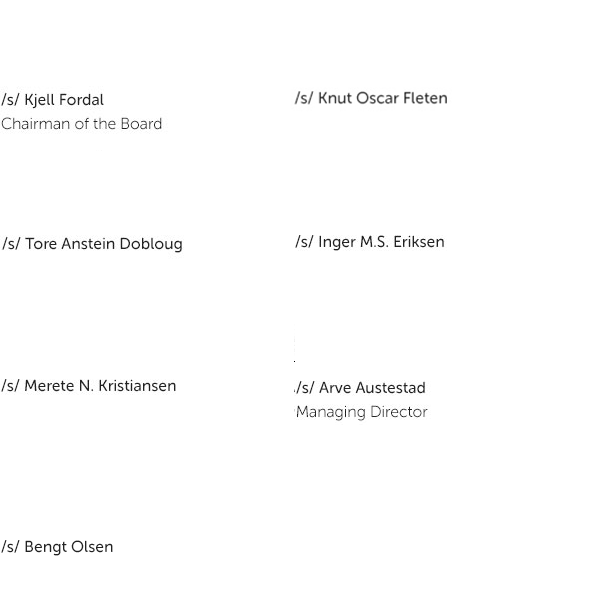Boligkreditt 1st Quarterly Report 2020
Statement of the board of directors
SpareBank 1 Boligkreditt’s purpose
SpareBank 1 Boligkreditt AS (‘Boligkreditt’, ‘SpaBol’, or ‘The Company’) is a credit institution licensed by the Norwegian Financial Supervisory Authority (Finanstilsynet) and is operated according to the legislation for covered bond issuers in Norway which is included in the Financial Institutions Act (“Finansforetaksloven”) chapter 11, section II and the detailed regulations thereof.
The purpose of the Company is solely to provide funding for its owner banks by buying qualifying residential mortgage loans from them with a loan-to-value (“LTV”) of up to 75 per cent and financing these through the issuance of covered bonds1.
The Company, which is based in Stavanger, is owned by banks which are all members of the SpareBank 1 Alliance. A comprehensive agreement with each of these banks regulates the mortgage purchasing process and the obligations which the banks owe the Company and its mortgage customers (“Transfer and Servicing Agreement”). The Company pays out the interest margin earned to its owner banks, with deductions for estimated operating and financial expenses. This margin is accounted for as commissions to owner banks.
The Company’s issuances of covered bonds mainly take place under the EUR 35,000,000,000 Global Medium Term Covered Note Programme (GMTCN Programme). This Programme was updated on April 20, 2020 and is available on the Company's home page: https://spabol.sparebank1.no.
The Company has procured the services of Moody’s Ratings Service to evaluate the credit quality of the issuances under the GMTCN Programme. The covered bonds rating is Aaa.
1 The limit for instalment mortgages is 75 per cent, while mortgages which have no scheduled repayment structure are limited to 60 per cent (these are a smaller portion of the mortgage portfolio). All mortgages above 60 per cent must be amortizing by at least 2.5 per cent per year according to current mortgage market regulations.
Cover pool and outstanding covered bonds 2
SpareBank 1 Boligkreditt’s cover pool consists of residential mortgages and liquid, highly rated assets as well as derivatives hedging liabilities in a foreign currency and/or at fixed rates. The chart below illustrates the balances as of the end of the first quarter 2020:
The amount of liquid assets varies over time and the variation is solely a result of the Issuer’s liquidity risk management (and regulatory requirements), whereby upcoming redemptions are refinanced prior to the maturity of outstanding bonds (minimum 180 days) with bond proceeds invested as liquid assets. Liquid assets are covered bonds with a triple-A rating, SSA or government bonds with a triple-A rating or short term cash deposits and repos (please see the cover pool statistical reports for details on the composition of liquid assets).
Derivatives are used solely to hedge currency and interest rate risk. They are tailored to exactly match the cash flows related to the bonds they hedge, for the full duration of the bond. Swap counterparties are subject to certain rating criteria and are in all cases banks other than the Company’s owner banks
The table below provide an overview of the residential mortgages in the cover pool, as well as the overcollateralization.
2 The source is the balance sheet figures as of 31 March 2020 and the cover pool asset liability test for overcollateralization (see notes to the financial statements). Norwegian covered bond issuers are required by law to group derivatives as part of cover pool assets, and not together with the issued covered bonds that they hedge. This is reflected in the chart and figures above. This may not be identical to the Moodys overcollateralization calculation, which in an economic sense provides a better illustration by grouping derivatives with the bonds they hedge.
Residential mortgages key figures 3
The table below provide an overview of the residential mortgages in the cover pool:
| Q1 2020 | Q4 2019 | Q3 2019 | Q2 2019 | Q1 2019 | |
|---|---|---|---|---|---|
| Weighted Average Current LTV (%) | 53.2 % | 53.6 % | 52.1 % | 52.1 % | 53.1 % |
| Weighted Average Original LTV (%) | 59.3 % | 59.7 % | 59.6 % | 59.6 % | 59.6 % |
| Average Loan Balance (NOK) | 1,456,844 | 1,443,119 | 1,440,088 | 1,436,755 | 1,430,260 |
| Number of Mortgages in Pool | 136,884 | 132,358 | 131,564 | 132,483 | 131,375 |
| Pct. of non first-lien mortgages | 0.0 % | 0.0 % | 0.0 % | 0.0 % | 0.0 % |
| Overcollateralization | 4.2 % | 4.1 % | 5.9 % | 6.0 % | 6.5 % |
Key developments in the first quarter 2020
SpaBol issued 6.4 billion Norwegian kroner of covered bonds in the domestic market during the first quarter 2020, and further market issuance has taken place in the beginning of the second quarter.
In addition, covered bonds were issued to the Company’s owner banks which were used as collateral in the newly established Central Bank facility, which is one of the responses of Norges Bank to the capital market turmoil that the Covid-19 crisis has brought. Because of this, residential loan volumes increased on the Company’s balance sheet during the first quarter at a higher rate than normal, at 8.4 billion kroner.
With the market turmoil and worsening economic outlook, the countercyclical capital buffer for banks was reduced. The buffer requirement, which was increased by 0.5 percentage points on December 31, 2019 to 2.5 per cent, was reduced to 1.0 per cent on March 13, 2020. A reduction in the buffer takes place with immediate effect.
The Board of Directors views Boligkreditt as well capitalized with a capital coverage ratio of 23.4 per cent against a total requirement of 15.4 per cent. including all buffers and a 0.9 per cent Pillar 2 requirement. Total CET1 capital is 20.8 per cent against a total requirement, including buffers, of 13.4 per cent. Common equity capital was 18.7 per cent against a requirement, including all buffers, of 11.9 per cent. It is the Company’s policy to maintain capital ratios slightly above the regulatory requirements. When required, additional common equity is contributed by the owner banks in the regular course of business, usually in connection with increases in transferred mortgage volume. Additional Tier 1 and Tier 2 capital is raised in the Norwegian domestic market.
The financial accounts were impacted by the market turmoil in the first quarter 2020, with credit spreads widening and the 3 month NIBOR rate falling. Both elements caused unrealized mark to market losses in the accounts, which showed a negative result of 181 million kroner for the first quarter.
Quarterly Accounts
The accounts have been prepared in accordance with the International Reporting Standards (IFRS) as adopted by the EU and published by the International Reporting Standards Board (IASB).
The Board views the accounts as presented to be a true representation of SpareBank 1 Boligkreditt’s operations and financial position as of the end of the first quarter 2020. Numbers in brackets refer to the corresponding period last year for comparison.
The total balance sheet at 31.03.20 amounted to 282 (236) billion kroner. The increase is primarily due to an increase in the value of derivatives hedging issued debt, increased issuance of debt and increased mortgage loans. The Company had in the first quarter of 2020 net interest income of 480 (448) million kroner. Commissions paid to the owner banks were 358 (346) million and represent most of the margin between mortgage interest rates and the Company’s funding costs. The cost of operations for the first quarter 2020 was 9.9 (8.2) million kroner including depreciation and amortization. IFRS 9 expected loan losses increased by 9.2 (-2.2) million kroner. The loan losses are assessed by applying the IFRS 9 principles and model and taking into account the worsening economic outlook. No actual loan losses have occurred since the Company commenced operations. This produces an operating result of -181 (106) million kroner before tax. Changes in net gains/losses from financial instruments (valuation changes of bonds) was a major contributor to the change in result, both on the asset side and the liability side. These are mostly unrealized losses.
Mortgage loans for residential properties amounted to 199.7 (188.2) billion kroner as of the end of 2019. The Company’s own liquid assets were approximately 15.8 (16.4) billion kroner.
Liquid assets are cash and highly rated, highly liquid bonds are held as a function of refinancing early the Company’s upcoming bond maturities at least six months ahead of expected maturities. Liquid assets are managed to meet the 180 day minimum liquidity rule in the EU covered bond harmonization directive and the NSFR rule.
Risk aspects
SpareBank 1 Boligkreditt, as a licensed and regulated covered bond issuer, is subject to strict rules regarding its exposure to credit, market, and liquidity risks. This fact, and the aim of the maintenance of the Moody’s Aaa rating, means that the Company is subject to low levels of risk and places strong emphasis on risk control.
Credit Risk is defined as the risk that losses can occur as a consequence of that customers and others not having the ability or willingness to meet their obligations to SpareBank 1 Boligkreditt. Because the Company buys residential mortgages within 75% of the value of the objects on which the mortgages are secured, the Board of Directors concludes that the credit risk is lower than for Norwegian banks in general.
Market risk is defined as the risk of losses due to changes in market rates, i.e. interest rates, exchange rates and the prices of financial instruments. At the end of the year SpareBank 1 Boligkreditt AS had issued bonds for approximately 168 billion kroner in EUR, 9.7 billion kroner in GBP and 0.3 billion kroner in SEK, based on exchange rates at March 31, 2020. However, all borrowing and investments with a fixed rate, and all borrowing and investments in foreign currency, have been hedged by financial currency- and/or interest rate swap agreements, or through natural hedges. The collective cash flow from FX amounts hedged with swaps matches borrowing in Norwegian kroner with floating rate conditions (NIBOR 3 months). The Company receives collateral from its counterparties in derivative agreements according to certain criteria.
The bonds held in the Company’s liquidity portfolio are mainly Nordic covered bonds and German supra sovereign and agencies (agencies guaranteed by the German government) with a triple-A rating from Fitch, Moody's or S&P. Deposits are placed in banks with a minimum rating of A/A2. Cash is also placed in reverse repos with approved counterparty banks, with AAA rated securities as collateral.
The Company had as of March 31, 2020 only moderate interest rate risk and little currency risk.
Liquidity risk is defined as the risk that the Company is not able to meet its obligations at maturity or to finance the purchase of loans at normal terms and conditions. Liquidity risk is managed based upon a liquidity strategy approved by the Board of Directors. According to the strategy, SpareBank 1 Boligkreditt AS shall maintain a material liquidity reserve with a minimum size equal to, or more than all debt maturities within the next 6 months, or to comply with the NSFR requirement as proposed, whichever is higher. The Board of Directors views SpareBank 1 Boligkreditt AS’s liquidity situation as good.
Operational risk is defined as risk of loss due to error or neglect in transaction execution, weakness in the internal control, or information technology systems breakdowns or malfunction. Reputational, legal, ethical and competency risks are also elements of operational risk. The risk is assessed by the Board of Directors to be moderate.
The Company spends much time identifying, measuring, managing and following up on central areas of risk in such a way that this contributes to meeting its strategic goals. The notes 23 to 27 in the 2019 annual accounts provides further information in this respect.
Macroeconomic development and outlook
The Norwegian mainland economy expanded by 2.4 per cent in 2019. The outlook for 2020 has changed dramatically due to the Covid-19 crisis.
IMF’s recent economic outlook (April 2020) estimated a recession in Norway with a drop in real GDP of 6.2 per cent for 2020, alongside a strong recovery in 2021. This is along the lines for the forecast for the world’s major economies, and slightly better than the estimates from IMF for the European Union and the Euro area, with declines of 7.5 and 7.1 per cent of real GDP, respectively.
The material decline in the price of oil and gas is likely to shape investment levels in the oil and gas industry for 2020, Norway’s largest industrial sector. Investments were recovering from the previous decline in the oil price during 2014 to 2016 and were originally (early February 2020) projected to be 180 billion kroner for 2020. The low point for investments after the previous oil price slump came in 2017, when 145 billion kroner were invested in the sector. This indicates that despite an adverse oil price environment, there might in the short to medium term be a floor for oil sector investments, and thus related mainland economic activity.
Residential house prices seem so far not to have fully reacted to the Covid-19 crisis, and it is uncertain to which extent house prices will react. Nationally, during the month of March 2020, residential real estate prices fell approximately 1.5 per cent on low transaction volumes.
Unemployment has increased dramatically in Norway as elsewhere in the world, with an unemployment and workers furloughed rate, based on registry data, of perhaps 13 to 14 per cent in April 2020, up from 2.1 per cent in February 2020. For the unemployed, wages are paid for 20 days by a new government programme, unemployment benefits thereafter are 60 per cent of salary (subject to a cap). Banks are granting instalment payment holidays for newly unemployed on request. The Norwegian government has rolled out many other programmes to help businesses economically. Spending from the oil fund will therefore breach the 3 per cent spending rule in 2020, and may be go as high as 5 or 6 per cent of the fund’s size as of year-end 2019.
Future prospects of the Company
The Company has a portfolio of residential mortgage loans with an average loan to value (LTV) slightly above 50 per cent, and no loans are in default. The maximum allowable level for a mortgage in a cover pool is 75 per cent LTV, with amounts above that level not being eligible as a cover pool asset.
SpareBank 1 Boligkreditt’s residential mortgage portfolio is well diversified, albeit weighted towards the eastern, central and northern regions in Norway (with little exposure in the southwest oil-dominated area of Norway). Mortgage loans in the cover pool are very granular (average size of 1.4 million kroner). The banks in the SpareBank 1 Alliance are required to keep reserves of eligible (i.e. cover pool pre-qualified) mortgages in order to provide replacement assets should this become necessary. This could be the case if residential price declines, and LTVs increase above the eligibility limit for mortgages. Such reserves in the banks are robust, and reserves are tested regularly to ensure that a 30 per cent decline in real estate prices can be handled, with sufficient qualifying reserves replenishing the cover pool.
Due to a strict qualifying process for loans to become part of the cover pool, a high degree of diversification of the mortgages in the pool and ample low-LTV mortgage reserves in the parent banks, the Board of Directors views the prospects for the Company to remain stable. This is in despite of the adverse economic environment caused by the Covid 19 crisis. The Board also bases this conclusion on the low average LTV of the mortgage portfolio, no defaults or loans in arrears, a strong history and institutional framework in Norway for residential mortgage loan origination and performance, including also unemployment benefits and other new measures taken to mitigate the economic stress caused by Covid-19. During the last weeks of March and in early April 2020, Boligkreditt issued sizeable volumes of covered bonds in the domestic market and this attests that the Company’s covered bonds are seen as a stable alternative by investors in time of market turmoil, economic crisis and uncertainty.
* * *
The Board of Directors affirms its conviction that the financial accounts present a correct and complete picture of the Company’s operations and financial position at the end of the first quarter of 2020. The financial accounts including notes are produced under the assumption of a going concern.
There have been no incidents of a material nature after quarter-end which are expected to impact the accounts for the first quarter 2020.
Stavanger, April 28, 2020
The Board of Directors of SpareBank 1 Boligkreditt AS

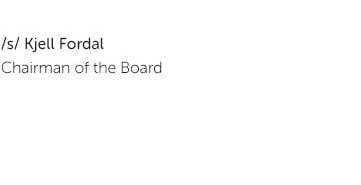

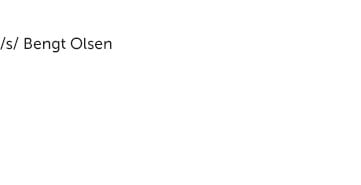

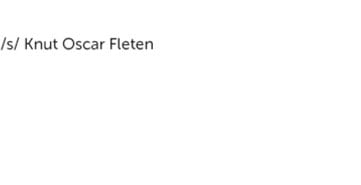

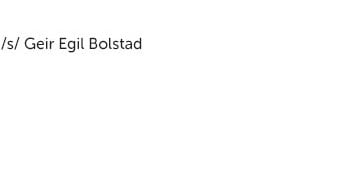
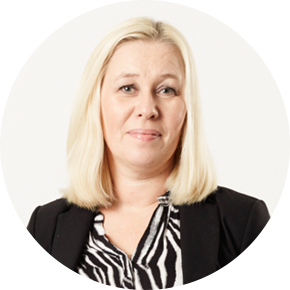
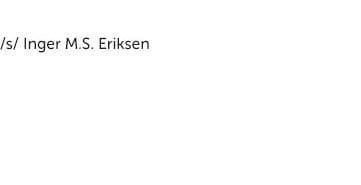

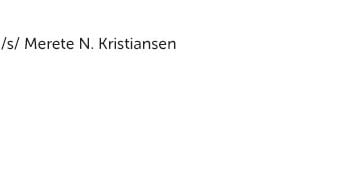

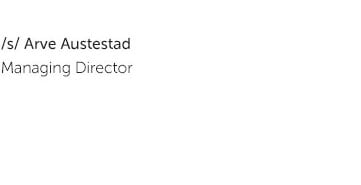
SpareBank 1 Boligkreditt AS
- Statement of the members of the board and the chief executive officer
The Board and the chief executive officer have today reviewed and approved the financial accounts for the first quarter 2020 for SpareBank 1 Boligkreditt AS. The accounts have been prepared in accordance with the International Financial Reporting Standards (IFRS), as adopted by the EU.
To the best knowledge of the Board and the chief executive officer the accounts have been prepared in accordance with applicable accounting standards and give a true and fair view of the assets, liabilities, financial position and profit or loss of the Company taken as a whole as of 31.03.2020.
The Board of Directors and the chief executive officer declare to the best of their knowledge that the annual report gives a true and fair view of the development and performance of the business of the Company, as well as a description of the principal risks and uncertainties facing the Company.
Stavanger, April 28, 2020
The Board of Directors of SpareBank 1 Boligkreditt AS
